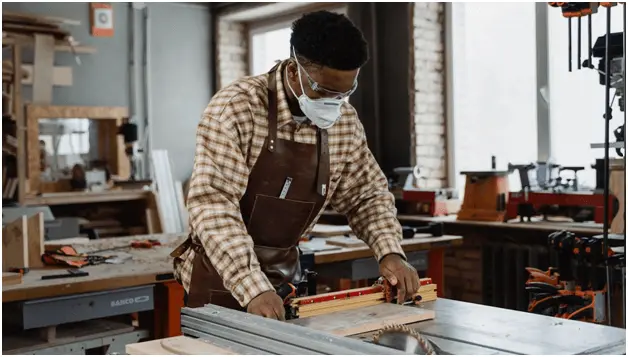Discover the very best Practices for Successful Drywall Fixing and Installment
The art of drywall repair and installation requires a mix of ability and accuracy. Understanding the essential tools is important for attaining a smooth finish. Understanding the step-by-step process can make a significant distinction in the outcome. Proper methods for taping and mudding are additionally essential. What remains is the understanding of maintenance that ensures durability. These elements together create a refined end result worth checking out even more.

Important Devices for Drywall Fixing and Installation
When carrying out drywall repair and installment, having the right tools can greatly enhance the performance and high quality of the job. An utility knife is vital for reducing drywall sheets precisely, while a drywall saw can help in making more complex cuts. Taping knives, available in various dimensions, are vital for applying joint compound smoothly and uniformly. A drywall sander, preferably with a dust collection attribute, helps attain a refined coating, lowering the demand for comprehensive clean-up.
Additionally, a determining tape warranties accurate dimensions, and a degree guarantees that installments are straight and plumb. Security equipment, including dirt masks and safety glasses, need to not be overlooked to safeguard versus particles and dirt. Finally, a stud finder aids in situating mounting participants, assuring protected setup. By equipping oneself with these important devices, the fixing and installation process becomes much more workable and results in a professional-quality outcome.

Step-by-Step Overview to Patching Holes
Patching openings in drywall requires an organized technique to ensure a seamless repair work. Initially, the area around the hole have to be cleansed and any kind of loose debris got rid of. For little holes, a putty blade can be used to use a lightweight spackle, pushing it into the opening and smoothing the surface. After it dries out, sanding is important to produce a level surface. For bigger holes, a spot of drywall may be required. This entails reducing a piece of drywall somewhat larger than the hole, securing it to the wall surface with screws, and making use of joint substance to cover the seams. As soon as the substance dries out, it should be fined sand smooth. Lastly, priming the patched location before painting will certainly assure an even finish. Following these steps will certainly cause a professional-looking repair service that mixes perfectly with the surrounding wall.
Methods for Seamless Drywall Setup
Accomplishing seamless drywall installation needs careful planning and implementation. First, it is vital to reduce and gauge drywall sheets precisely to reduce voids. Making use of an utility knife, installers need to score the board prior to snapping it along the cut line, ensuring tidy sides. Effectively lining up the sheets is important; beginning with the top and functioning down assists preserve uniformity.
Securing drywall to the studs calls for regular spacing, commonly every 16 inches, using screws as opposed to nails for better hold. This approach lowers the danger of stands out with time. Additionally, startling the joints between sheets enhances structural honesty and decreases the visibility of joints.
Making use of the appropriate density of drywall for details areas-- such as moisture-resistant types in bathrooms-- more adds to a flawless finish. Adhering to these methods will lead to a professional-looking and smooth setup, setting the stage for the subsequent finishing procedures.
Ending Up Touches: Taping and Mudding
Finishing touches, such as taping and mudding, play a crucial duty in accomplishing a refined drywall surface. Insulation includes applying a slim strip of drywall tape over the seams and joints, ensuring a seamless appearance. This procedure aids prevent fractures and produces a solid bond between drywall sheets. It is crucial to select the best kind of tape, with paper and fiberglass harmonize being one of the most typical choices.
Mudding, or applying joint compound, complies with taping. This compound completes gaps and ravel the surface for an uniform finish. It is usually applied in numerous layers, with each layer needing to completely dry prior to fining sand. Proper method entails feathering the edges to mix the compound right into the surrounding drywall, minimizing exposure.
When completed properly, mudding and taping enhance both the architectural and aesthetic honesty of the drywall installment, leading to a professional-quality coating.
Tips for Maintaining Your Drywall After Installment

In addition, preserving a regular indoor humidity degree can protect against warping or mold and mildew growth. Using a dehumidifier in damp click here areas, like basements, is a good idea. It's likewise valuable to occasionally repaint locations that reveal wear, as this shields the underlying product. Ultimately, when relocating furniture or setting up components, caution ought to be worked out to avoid damaging the drywall. By following these maintenance ideas, property owners can expand the life of their drywall, securing it continues to be an appealing attribute of their interiors.
Frequently Asked Concerns
What Safety And Security Equipment Is Necessary for Drywall Repair Work and Setup?
For drywall fixing and installation, vital safety gear consists of safety goggles to secure eyes, dust masks to avoid breathing of particles, handwear covers for hand security, and knee pads for comfort during long term kneeling. drywall contractor.
Exactly how Do I Determine the Drywall Density Needed for My Project?
To figure out the drywall thickness required for a job, one should think about the wall surface's architectural needs, neighborhood building regulations, and the planned use of the room, usually choosing 1/2-inch or 5/8-inch drywall.
Can I Repair Drywall Without Removing Furniture From the Room?
Yes, drywall can be repaired without removing furniture from the area. Careful preparation and safety actions can reduce mess, permitting efficient repair work while maintaining surrounding things secure from dirt and damages throughout the process.
What Sorts of Drywall Are Finest for Various Atmospheres?
Moisture-resistant drywall is excellent for bathrooms and kitchens, while soundproof drywall fits shared wall surfaces in homes. Fire-rated drywall is best for garages, and basic drywall works well in general living areas, ensuring sturdiness and suitability for different environments.
How much time Does It Take for Drywall Mud to Dry Totally?
Drywall mud usually takes 24 to 48 hours to completely dry entirely, relying on aspects like humidity and temperature (drywall contractors). Thicker applications might need longer drying out times, while thinner layers can dry out more promptly. Appropriate ventilation help drying out
The art of drywall fixing and setup calls for a blend of ability and precision. When carrying out drywall repair work and installation, having the right devices can greatly boost the effectiveness and high quality of the job. An energy blade is essential for reducing drywall sheets precisely, while a drywall saw can assist in making more complex cuts. Attaining smooth drywall installment demands mindful planning and execution. Moisture-resistant drywall is excellent for bathrooms and kitchens, while soundproof drywall suits shared walls in homes.